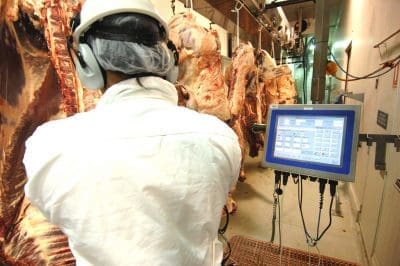RAINFALL of 25-100mm across parts of Queensland, Victoria and the Northern Territory over the past week has caused further delivery challenges for beef processors across eastern Australia.
Isolated falls of between 100mm and 250mm have been reported since Thursday in grazing areas of far western and Northwestern Qld.
 And with further falls of 50mm or more forecast for the next week across eastern regions of NSW, Victoria and Queensland, it suggests processors’ weather challenges are not likely to go away any time soon.
And with further falls of 50mm or more forecast for the next week across eastern regions of NSW, Victoria and Queensland, it suggests processors’ weather challenges are not likely to go away any time soon.
Processors spoken to for this report said they had so far managed to make alternate arrangements to cover cancellations, and did not expect to have to drop shifts this week due to the supply problems.
With the exception of some areas in southern Australia, direct consignment grids are steady this week, with the shortened working weeks caused by Easter and other upcoming public holidays putting a limit on buyer demand – especially with plenty of forward bookings arleady in place, and cattle committed earlier that were put back due to March rain.
In the heavily concentrated southern Queensland processing region, competitive processors are this week offering around 520c/kg for grass four-tooth ox with an implant, and 450-470c/kg on heavy cows. Central Queensland plants are 10c/kg behind those quotes, and North Queensland, another 15c.
Some Queensland operators reported that they have shortened-up a little in supply this week, but it was only due to the wet weather problems, meaning those empty slots would fill up once paddocks and roads dried out a little.
Some processors have held back offers for a day or two since Easter, but among those that are presently active, most are looking to fill slots in weeks commencing April 22 and 29, with only a few gaps next week.
Particularly in Queensland, cows have occupied a larger proportion of kills in the past couple of weeks, perhaps partially in response to attractive manufacturing beef prices out of the US. More to come on that in an article later this week. The start of mustering and preg-testing on some more extensive northern properties as conditions start to cool off is also contributing to that.
All indications are that the industry is now building towards a very busy mid-year period, as more country starts to dry out after persistent first-quarter rain, and grass cattle reach optimum weights.
Some contacts suggested supply is starting to tighten up in southern Australia, and this may push southern processor operators north early this year, in search of slaughter stock at relatively cheaper prices. Normally that cycle does not start until around late May or early June, but could arrive early this year.
Quotes obtained from processors in southern regions indicate a price gap is already opening up, relatively Qld rates.
In eastern regions of Southy Australia, direct consignment quotes of as much as 520c/kg on heavy cows were seen this morning (up 20c/kg on last week) and 550c on four-tooth ox were seen this morning, while southern NSW cow grids are still at 460c, but bullocks have risen to 560c/kg for no-HGP examples.
Saleyards numbers subdued
All saleyards that have operated since the return from Easter break have recorded significant declines in offerings this morning – caused both by the shortened working week and rain impact in some areas.
Delays with direct-consignment slaughter cattle created some additional demand via the saleyards system from processors early this week, to help fills gaps in rosters.
A preliminary report from today’s Roma sale indicated only 1230 head yarded, due to the impact of weather and the long weekend. Prices improved slightly on most categories. Score 2 cows 400-520kg made from 160-212c with the score 3s, and score 3 cows over 520kg selling to 240c/kg.
Gunnedah sale this morning yarded less than 1000 head, on top of another low offering last week. Cow prices were mainly stronger, coming off a low base the week before, but there were too few heavy grown steers to quote.
Wodonga sale this morning yarded 1100 head, down another 300 on last week, with the market described as upbeat. Heavy steers increased by 20-24c, selling from 272-345c/kg, while bullocks improved by 20c, making from 282-327c/kg. In the cow market, buyers were active, and leaner cows attracted fierce bidding, gaining 32c and selling from 235-254c/kg. Heavy cow prices continued to climb, lifting 11c and selling from 246-278c/kg.
Naracoorte this morning yarded only 468 head, in a sale that was mostly dearer, with the better types being highly sought after by the buying group. Grown steers and bullocks made from 252-337c with a lift of up to 20c. Heavy cows sold from 232-261c with a rise of 15c as lighter lots returned from 150-233c.
